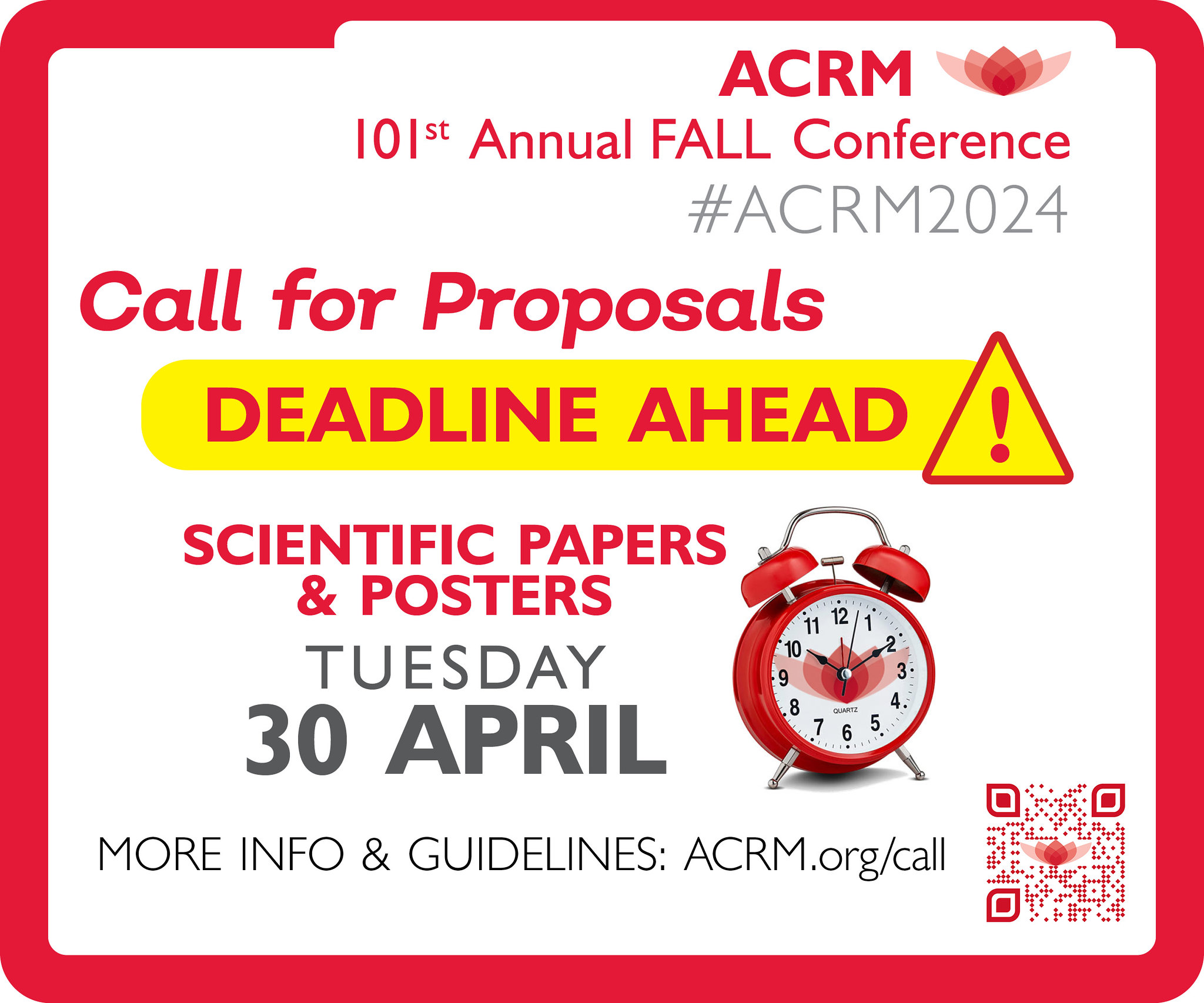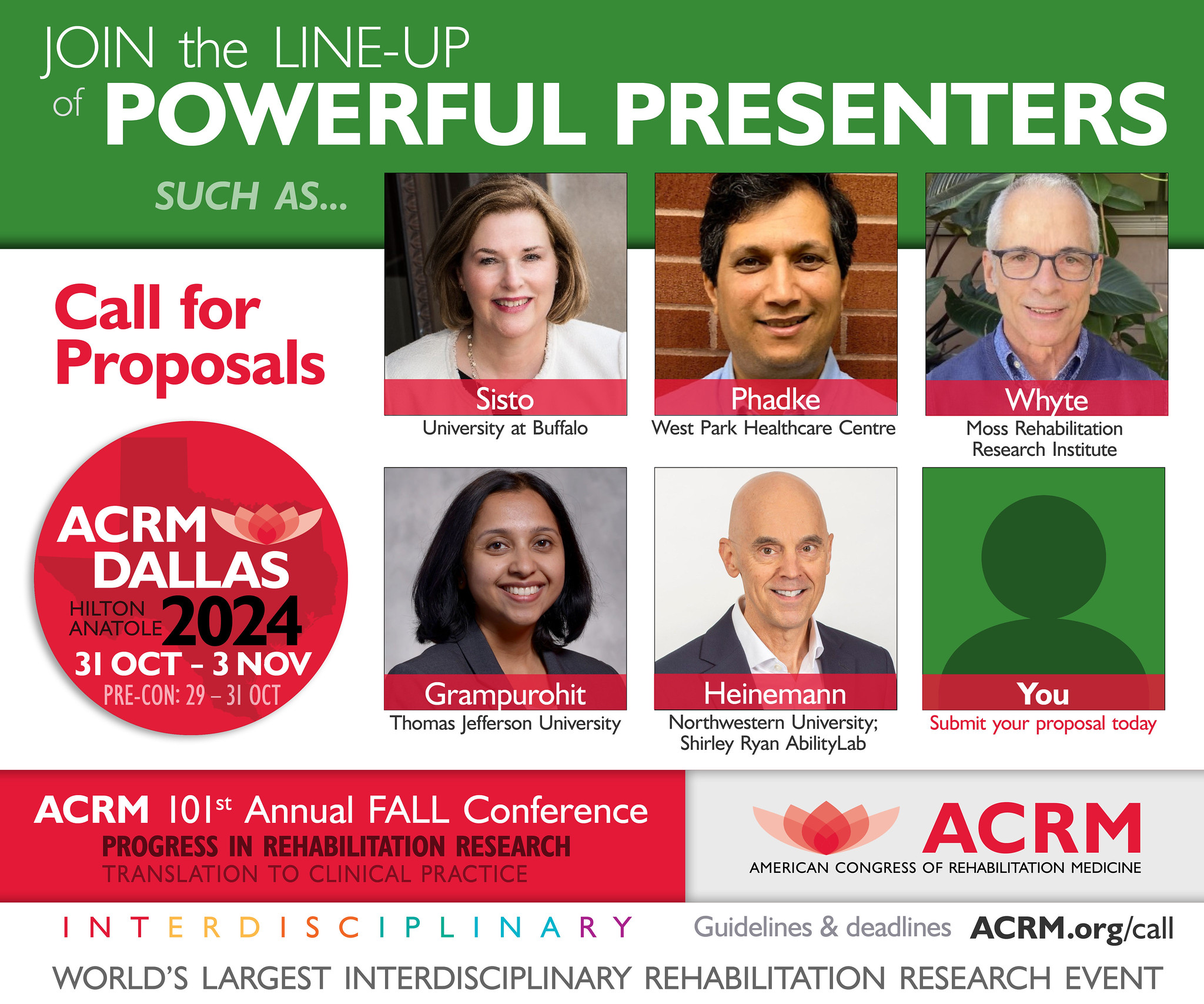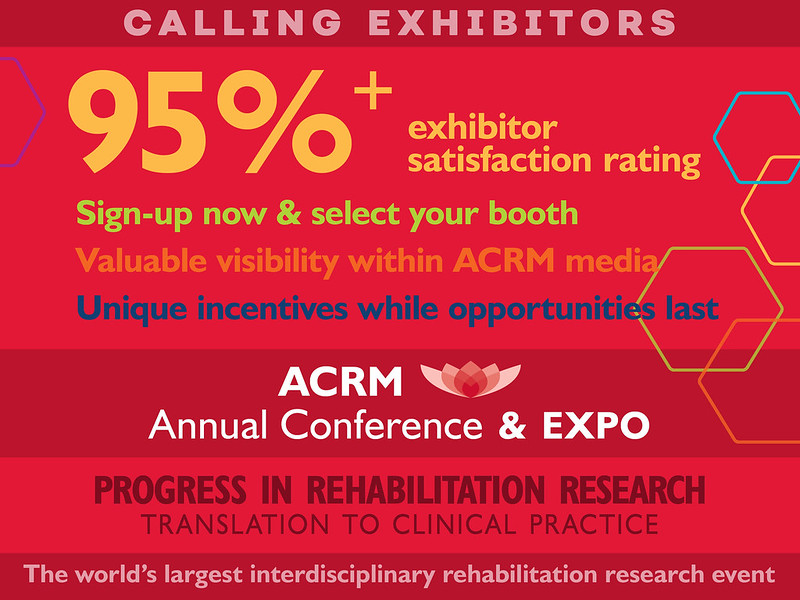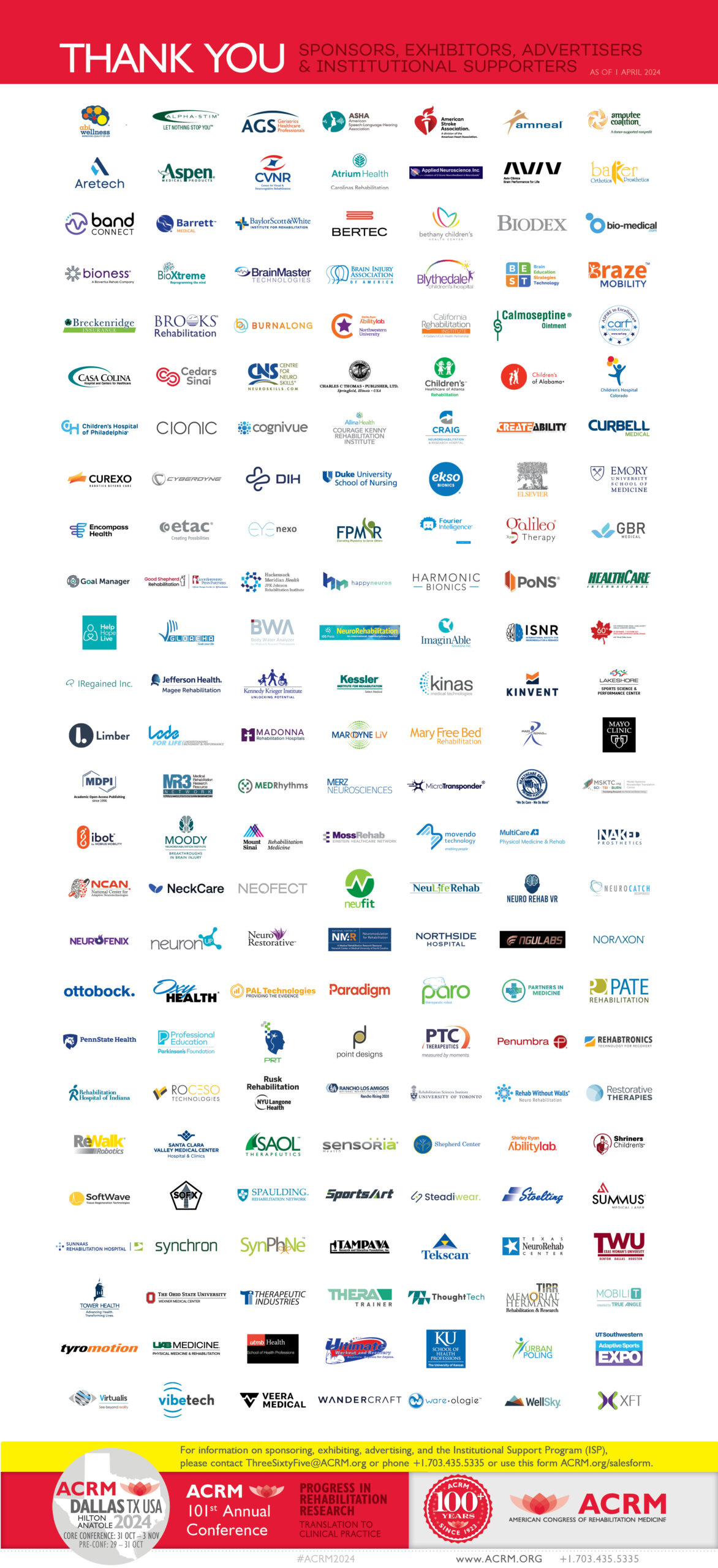Submitted by: Ronald T. Seel, PhD, FACRM, Chair of the Evidence and Practice Committee and Director of Brain Injury Research at Shepherd Center, Atlanta, GA

Ronald T. Seel, PhD, FACRM
A core feature of the ACRM mission is to promote excellence in rehabilitation science through interdisciplinary collaboration and use of state-of-the-science methods in research. The Evidence and Practice Committee, formerly named the Clinical Practice Committee, was created by the ACRM to provide expertise on all issues relevant to the collection, evaluation, synthesis, and dissemination of evidence and the practice parameters that may be based upon it. The name change to “Evidence and Practice” Committee (EPC) more accurately reflects our broad mission to increase the quantity and improve the quality of rehabilitation evidence, systematic reviews, practice guidelines, and position statements.
The EPC has primary responsibility for evaluating the quality of evidence reviews and EBP recommendations that would be disseminated as ACRM systematic reviews, guidelines or practice recommendations and for facilitating the development of such materials in the ACRM. The EPC also evaluates all guidelines or recommendations developed by other organizations proposed for ACRM endorsement and provides recommendations to the ACRM Board of Governors whose approval is required for final endorsement.
To assist ACRM members in the development of systematic reviews and practice guidelines, the EPC has published a new webpage at www.ACRM.org/resources/evidence-and-practice to provide investigators with all of the materials needed to conduct a systematic review including:
- Project development forms
- Access to the AAN Clinical Practice Guideline Process Manual
- Ongoing consultation and quality review to better perform these reviews and increase the likelihood of the reviews being endorsed by the ACRM.
The website provides links to other websites that provide helpful information on evidence-based practice and access to the ACRM-endorsed practice guidelines and position statements.
In addition to the development of this webpage, the EPC has undertaken several projects over the last several years to improve the quality and quantity of rehabilitation research evidence. In the summer of 2012, the EPC sponsored the Archives of Physical Medicine and Rehabilitation (PM&R) supplement, “Developing and Using Evidence to Improve Rehabilitation Practice: A Guide for Researchers and Clinicians,” which provides state-of-the-art methods for conducting clinical trials, case studies, developing outcome measures, developing prediction models, and conducting systematic reviews. Access to this supplement may also be found on the new EPC webpage.
The EPC is actively working on a set of criteria to improve rating the quality of behavioral studies that use patient reported outcomes. Most evidence rating systems for intervention studies have been developed using medication treatments and randomized controlled trials as the exemplar for all clinical trials. The EPC recognizes that most rehabilitation interventions are behavioral, it is difficult to blind both the treating clinician and patient as to the experimental behavioral treatment, and that patient reported outcomes, e.g., pain, depression, and life quality, are primary outcomes in which objective measurement, at least in the strictest sense, is not possible.
Further, the EPC also keeps track of trends and new developments in the reporting and development of evidence at a national and international level with the goal of educating researchers on new requirements and state-of-the-art. For example, The EQUATOR (Enhancing the QUAlity and Transparency of health Research) Network (www.equator-network.org), an international consortium created to improve the quality of published health research, is promoting the use of robust reporting guidelines. There are now 28 rehabilitation journals that participate in EQUATOR, including the ARCHIVES of PM&R. This group put forward an initiative mandating that all submissions will adhere to reporting guideline criteria and associated checklists by 1 January 2015. Read about the initiative at http://www.equator-network.org/2014/04/09/collaborative-initiative-involving-28-rehabilitation-and-disability-journals/
The ACRM Evidence and Practice Committee is co-presenting with the ACRM Outcomes Measurement Networking Group a symposium at the 2014 ACRM Annual Conference in Toronto to provide research investigators, reviewers, and consumers with an overview of the four primary reporting guidelines required by EQUATOR/Archives of PM&R:
- CONSORT for clinical trials
- STARD for diagnostic studies
- STROBE for observational/prognostic studies
- PRISMA for systematic reviews.
Presentations will include evidence on the most common shortcomings in the reporting of each study type, critical reporting criteria from the CONSORT, STARD, STROBE, and PRISMA guidelines, and supporting evidence and practical reasons for required reporting.
The symposium presentations will also provide resources, websites, and published references for those interested in more detailed information on standards for developing, reporting, and reviewing research evidence.
Please check out the website and/or contact Dr. Seel ron_seel@shepherd.org on how the EPC may meet your rehabilitation research needs.

Members of the ACRM EPC are: (left to right) Ron Seel, chair; Marcel Dijkers; Mark Johnston; Jacob Kean; Jason Krellman; Joe Giacino; Joann Starks; Pat Brown; and Susan Horn; (not pictured) Archives Staff: Fiona Williams; ACRM Staff: Jenny Richard, Terri Compos, Cindy Robinson (website)









